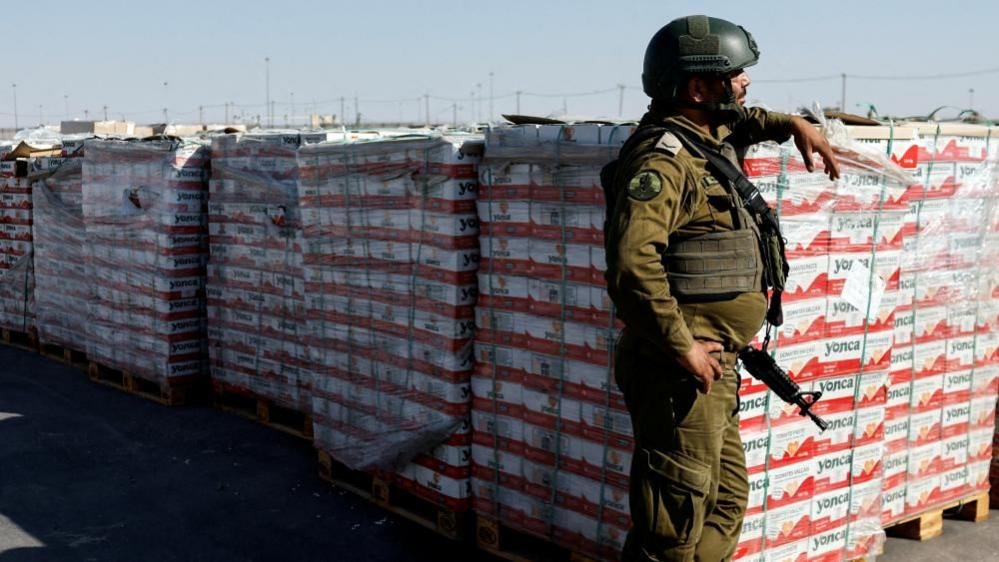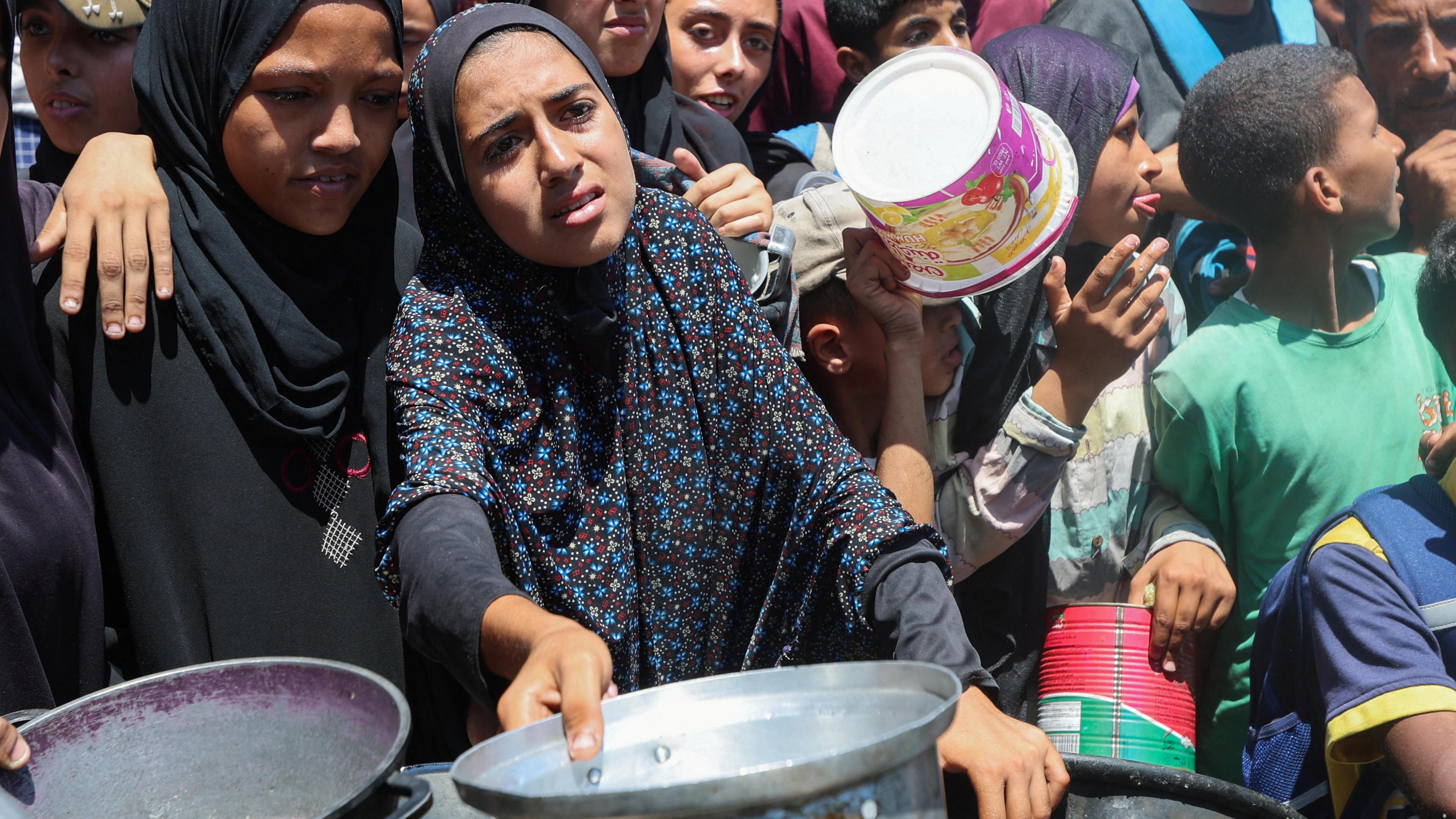Bowen: Israel's aid measures a gesture to allies horrified by Gaza starvation
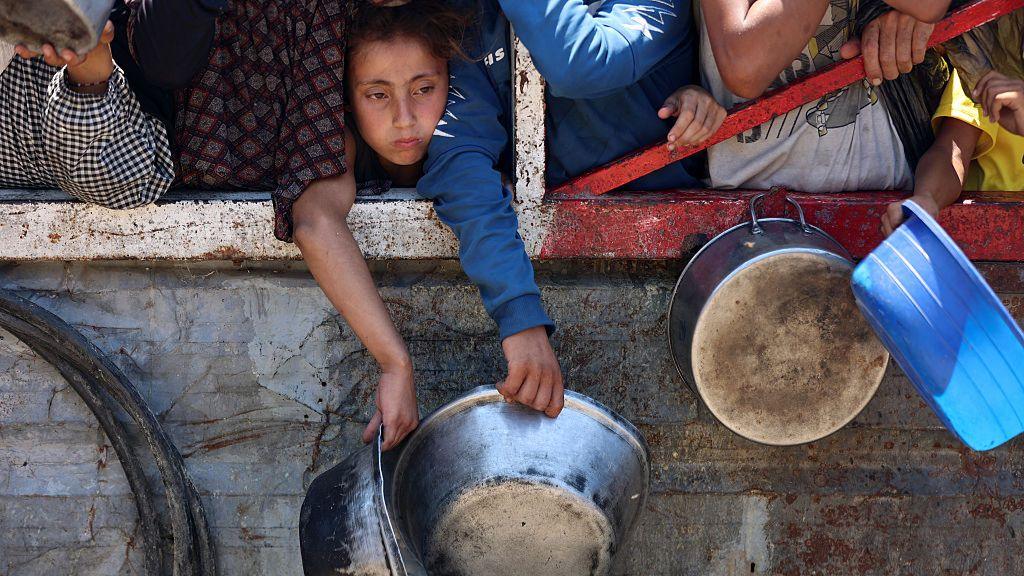
- Published
Israel has responded to sustained and growing international condemnation that it is responsible for starvation in Gaza by announcing a series of measures the Israel Defence Forces (IDF) said would "improve the humanitarian response".
It is allowing airdrops of aid, carrying out the first one itself during the night and allowing the United Arab Emirates air force to follow with another later on Sunday.
The IDF also announced that it would allow a "tactical pause in military activity" in some areas and set up "designated humanitarian corridors… to refute the false claim on intentional starvation."
Hamas has condemned the moves as a "deception". Israel, it said, was "whitewashing its image before the world".
Israel later carried out an airstrike during the "tactical pause." Reports from the scene say a mother called Wafaa Harara and her four children, Sara, Areej, Judy and Iyad were killed.
While Israel continues to insist it is not responsible for the humanitarian catastrophe in Gaza and does not impose restrictions on aid entering Gaza, those claims are not accepted by its close allies in Europe, or the United Nations and other agencies active in Gaza.
The new measures might be a tacit admission by the Israelis that they need to do more.
More likely they are a gesture to allies who have issued strong statements blaming Israel for starvation in Gaza.
The latest, on Friday 25 July, from Britain, France and Germany was stark.
"We call on the Israeli government to immediately lift restrictions on the flow of aid and urgently allow the UN and humanitarian NGOs to carry out their work in order to take action against starvation. Israel must uphold its obligations under international humanitarian law."
Israel followed a total blockade of all aid into Gaza with restrictions on the approval of the contents and movement of aid convoys. With the Americans, it has set up a new system of distributing aid through the so-called Gaza Humanitarian Foundation (GHF), intended to replace the aid network run by the United Nations. Israel claims that Hamas stole aid from the UN system. The UN says it is still waiting for the Israelis to back their claims with evidence.
The UN and other agencies will not cooperate with the GHF system, which they say is inhumane and militarised. More than 1,000 Palestinians have been shot dead looking for food since the GHF operation, according to the UN.
A retired US special forces colonel who worked for the GHF in Gaza told the BBC that he saw American colleagues and IDF soldiers opening fire on civilians. Both deny they have targeted civilians.
Watch: Air drop aid seen arriving in northern Gaza
Jonathan Whittall, the head in the Occupied Palestinian Territories of the UN's office for the coordination of humanitarian affairs (OCHA) has already condemned the methods used by the GHF. Israel told him his visa would not be renewed after he posted on social media a month ago that the GHF system had brought to Gaza "conditions created to kill… what we are seeing is carnage. It is weaponised hunger. It is forced displacement. It's a death sentence for people just trying to survive. It appears to be the erasure of Palestinian life".
After Israel announced its new measures, Whittall told the BBC that "the humanitarian situation in Gaza has never been worse".
He said for Israel's new measures to change matters for the better it would have to reduce the time it takes to allow trucks to transit the crossings into Gaza and improve the routes provided by the IDF for the convoys to use.
Israel would also need to provide "meaningful assurances that the people gathering to take food off the back of the trucks won't be shot by Israeli forces".
Whittall has been going in and out of Gaza since the war started, though that is now ending unless Israel decides not to withdraw his visa after all. He says that as IDF military operations continue "there remains an abhorrent disregard for humanitarian law".
Prime Minister Benjamin Netanyahu and his former defence minister Yoav Gallant are already the subject of an arrest warrant issued by the International Criminal Court last year, accused of joint criminal responsibility for "the war crime of starvation as a method of warfare; and the crimes against humanity of murder, persecution, and other inhumane acts." Netanyahu, Gallant and the Israeli state deny the allegations.
Israel released grainy footage of a transport plane dropping pallets of aid into Gaza. Lines of parachutes billowed out the back of the aircraft in the dark of the night. The IDF said it had delivered seven packages of aid containing flour, sugar and tinned food.
In other wars I have seen aid being dropped, both from the aircraft themselves and close up on the ground as it lands.
Air dropping aid is an act of desperation. It can also look good on television, and spread a feel-good factor that something, at last, is being done.
It is a crude process, that will not on its own do much to end hunger in Gaza. Only a ceasefire and an unrestricted, long term aid operation can do that. Even big transport planes do not carry as much as a small convoy of lorries.
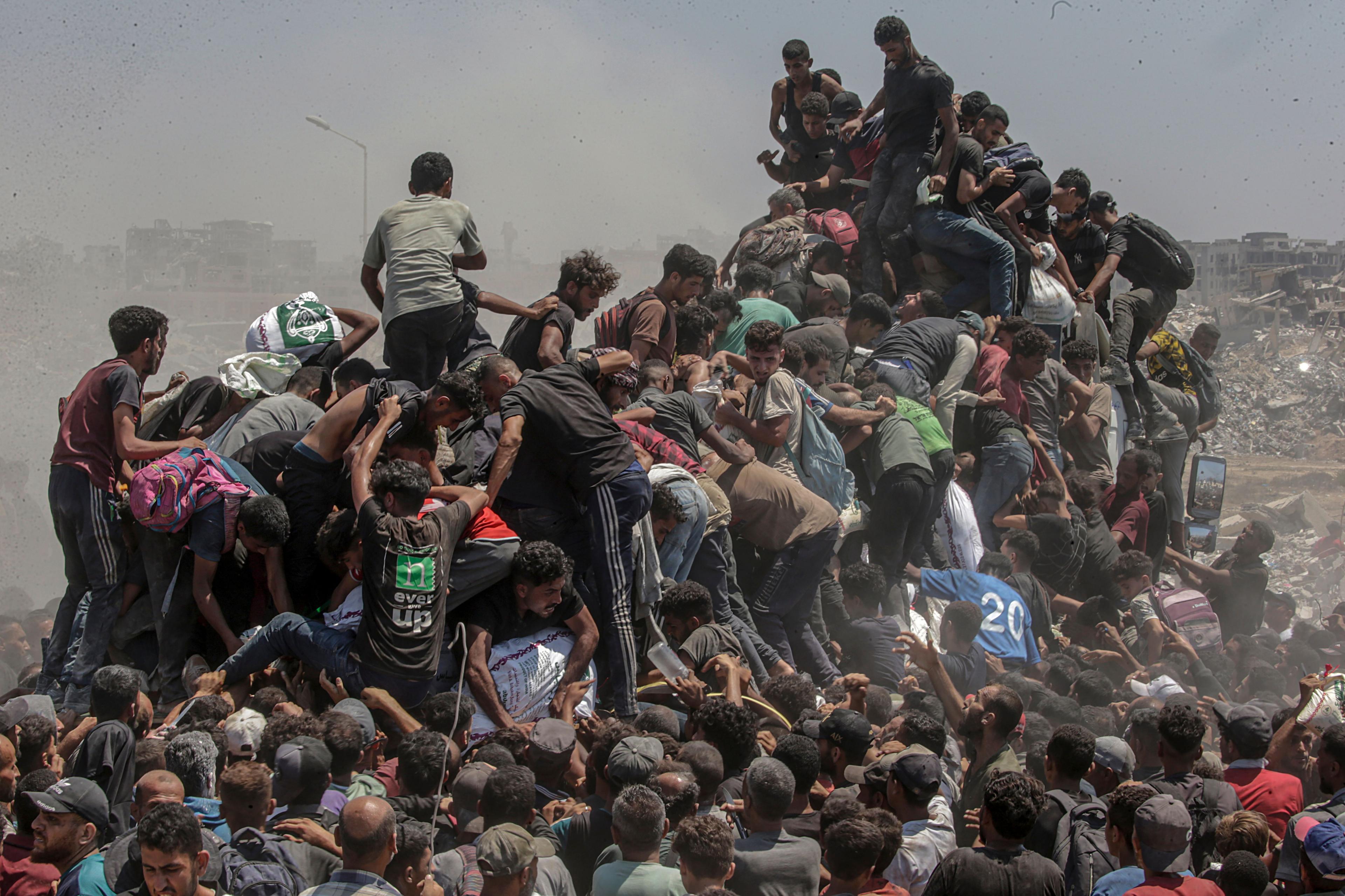
Palestinians try to grab bags of flour from an aid truck near Zikim, northern Gaza Strip on 27 July
In Iraqi Kurdistan, after the 1991 Gulf War, the US, UK and others dropped aid from C-130 transport aircraft, mostly army rations, sleeping bags and surplus winter uniforms to tens of thousands trying to survive in the open in mud and snow high in the mountains on Iraq's border with Turkey. I flew with them and watched British and American airmen dropping aid from the rear cargo ramps of the planes several thousand feet above the people who needed it.
It was welcome enough. But when a few days later when I managed to reach the improvised camps in the mountains, I saw young men running into minefields to get aid that landed there. Some were killed and maimed in explosions. I saw families killed when heavy pallets dropped on their tents.
When Mostar was besieged during the war in Bosnia in 1993, I saw pallets of American military "meals ready to eat", dropped from high altitude, scattered all over the east side of the city that was being constantly shelled. Some aid pallets crashed through roofs that had somehow not been destroyed by artillery attacks.
Professionals involved in relief operations regard dropping aid from the sky as a last resort. They use it when any other access is impossible. That's not the case in Gaza. A short drive north is Ashdod, Israel's modern container port. A few more hours away is the Jordanian border, which has been used regularly as a supply line for aid for Gaza.
Gaza was one of the world's most densely populated places before the war when the population of more than two million Palestinians had access to the entire strip. In British terms, the Gaza Strip is slightly smaller than the Isle of Wight. Compared to American cities, it's roughly the size of Philadelphia or Detroit.
Now Israel has forced most of Gaza's people into a tiny area on the southern coast, amounting to around 17% of Gaza's land. Most of them live in densely packed tents. It is not clear if there is even an open space for despatchers high in the sky to aim at.
Pallets of aid dropped by parachute often land far from the people who need it.
Each pallet will be fought over by desperate men trying to get food for their families, and by criminal elements who will want to sell it for profit.
Related topics
- Published27 July
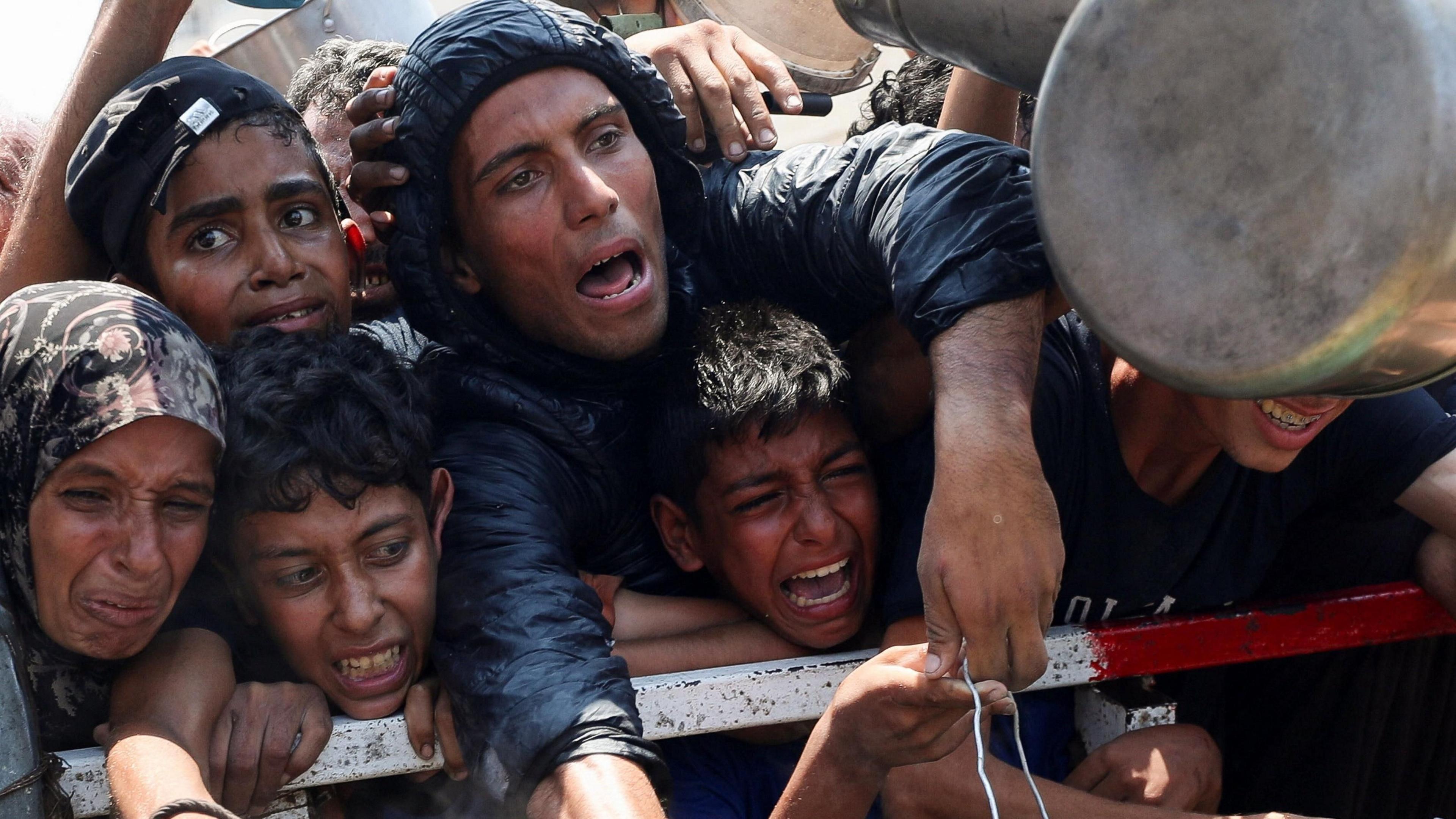
- Published27 July
